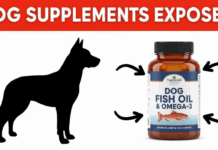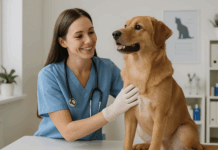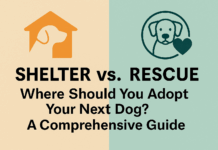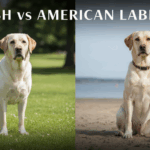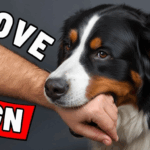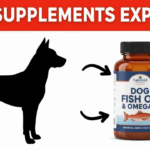Last Updated on January 11, 2024 by Dog Lover
The Top 3 Large Dog Nail Clippers in 2024: Keeping Your Gentle Giant’s Paws Pristine (Without the Drama)
Picture this: your majestic Great Dane, paws padding softly across hardwood floors, leaving no click-clack trail of overgrown claws.
A dream, right? Well, it doesn’t have to be. Keeping your large dog’s nails trimmed isn’t just about aesthetics (although those clickety-clacks can drive anyone bonkers).
It’s about paw health, safety, and comfort. Think of it as a spa day for your furry friend’s feet!
But hold on, before you reach for the nearest pair of clippers, let’s be real – not all clippers are created equal.
Chopping through your gentle giant’s thick nails with the wrong tool is a recipe for disaster (and whimpers).
That’s why we’ve embarked on a heroic quest, testing, comparing, and dissecting the best large dog nail clippers on the market.
We’ve braved the battle of the blades, the clash of the comfort grips, and the saga of the safety features, all to bring you the top 3 champions in the arena of large dog nail clippers.
So, grab your favorite chew toy and settle in, because we’re about to unleash the paw-fect guide to keeping your big buddy’s claws in tip-top shape.
The Nail-Trimming Nitty-Gritty: What Makes a Great Large Dog Clipper?
Before we dive into our champion clippers, let’s equip ourselves with some nail-trimming knowledge.
Size matters, and when it comes to large dog claws, you need heft, precision, and comfort. Here’s what to look for:
- Blade Strength: Think Excalibur, not butter knife. You need blades that can handle thick nails without bending or dulling. Look for high-quality stainless steel or even diamond-coated blades for maximum durability.
- Ergonomics: Comfort is key. Choose clippers with rubberized grips that fit comfortably in your hand, even after a marathon trimming session.
- Safety Features: Accidents happen, but they shouldn’t with your dog’s nails. Look for clippers with quick-stop guards that prevent over-trimming and built-in safety locks for storage.
- Ease of Use: No one wants a wrestling match with their dog over their nails. Opt for clippers with easy-to-squeeze handles and a simple one-handed operation.
And now, the moment you’ve been waiting for…
Drumroll please…
The Top 3 Large Dog Nail Clippers of 2024
1. Epica Professional Nail Clippers

These clippers are the Iron Man of the nail-trimming world. Built like a tank, with heavy-duty stainless steel blades and a comfortable, non-slip grip, they can handle even the thickest Great Dane claws with ease. The quick-stop guard and safety lock add a layer of confidence, while the one-handed operation makes trimming a breeze.
2. Millers Forge Premium Nail Clippers

Picture the sleek lines and precision of a Swiss watch, but for your dog’s nails. These clippers are a testament to quality craftsmanship. The razor-sharp, replaceable blades glide through thick nails like butter, and the ergonomically designed handles make for a comfortable grip. Plus, the built-in nail file is a bonus for smoothing out any rough edges.
3. Safari Professional Nail Trimmer

Don’t let the “professional” moniker intimidate you. These clippers are a user-friendly powerhouse. The guillotine design makes trimming quick and easy, even for nervous pup parents. The spring-loaded mechanism provides just the right amount of pressure, and the built-in nail file and quick-stop guard round out the package.
Bonus Round: The Contenders We Loved (But Didn’t Make the Podium)
- Dremel PawControl Nail Grinder: This electric grinder is a great option for dogs who hate the click-clack of clippers. It’s gentle, quiet, and effective, but it can be time-consuming and may not be suitable for all dogs.
- Boshel Dog Nail Clippers and Trimmer: These clippers boast a unique two-in-one design with both clippers and a grinder. While versatile, they may not be as powerful as dedicated clippers or grinders.
Beyond the Clippers: Tips for a Paw-sitively Perfect Trimming Session
Clippers are just the tip of the iceberg (pun intended). Here’s how to make nail-trimming a stress-free experience for you and your furry friend:
- Start Early: Get your pup used to having their paws handled from an early age. Make it a positive experience with treats and praise.
Find the quick: that pink area inside the nail that houses the sensitive nerves and blood vessels. It’s crucial to avoid it! Familiarize yourself with your dog’s nail anatomy and use a flashlight if needed.
Slow and Steady Wins the Race: Don’t go Rambo on those claws. Take small, precise snips, gradually shortening the nail until you get close to the quick. If you see a white dot, stop! You’re nearing the danger zone.
Positive Reinforcement is Key: Make nail-trimming a fun bonding experience. Offer praise, treats, and cuddles throughout the process. Remember, your dog feeds off your energy, so stay calm and relaxed.
Don’t Force It: If your dog gets nervous or wriggly, take a break! Pushing it will only make things worse. Schedule short, frequent trimming sessions instead of one marathon ordeal.
Seek Help if Needed: If you’re nervous or unsure, don’t hesitate to seek professional help from a veterinarian or groomer. They can show you the ropes and ensure your dog’s paws stay healthy and happy.
Remember, regular nail trimming is an essential part of responsible dog ownership. By choosing the right clippers, following these tips, and making it a positive experience for your furry friend, you can keep those click-clacks at bay and ensure your gentle giant’s paws remain pristine (without the drama).
FAQs
How often should I trim my large dog’s nails?
The frequency depends on your dog’s individual nail growth rate and activity level. Generally, aim for every 2-4 weeks.
What should I do if I accidentally cut the quick?
Don’t panic! Apply gentle pressure with a styptic pencil or cornstarch to stop the bleeding. If the bleeding is severe, consult your veterinarian.
Can I use human nail clippers on my dog?
No, human clippers are not strong enough for thick dog nails and can increase the risk of injury. Stick to clippers specifically designed for large dogs.
My dog hates having their nails trimmed. What can I do?
Make it a positive experience! Start with short sessions, offer treats and praise, and use calming techniques like massage or gentle talking. Consider consulting a professional trainer for behavior modification tips.
Are electric nail grinders a good alternative to clippers?
Yes, grinders can be a good option for dogs who are scared of clippers. However, they can be time-consuming and may not be suitable for all dogs. Consult your veterinarian for advice.
With these tips and the knowledge of the top 3 large dog nail clippers in your arsenal, you’re well on your way to keeping your gentle giant’s paws healthy and happy. Now go forth and conquer those claws!
Verified source references:
- American Kennel Club: https://www.akc.org/expert-advice/vets-corner/trimming-dogs-nails/
- Veterinary Partner: https://memorialvetpet.com/services/pet-grooming
- Dogster: https://dogsthat.com/podcast/107/

